Promoting addition. A large number of tiddlywinks games have targets segmented into areas that are marked with different numbers. Often, the center of the target contains a cup, and shooting a wink into the cup garners the highest number of points. However, missing the cup and landing in one of the numbered areas outside the cup also earns the winker points, albeit less than shooting a wink into the cup. In playing the game, winkers need to keep track of points and add them up to determine who wins.
Tiddlywinks has been identified as a game that helps develop hand-eye coordination in children (and adults!).
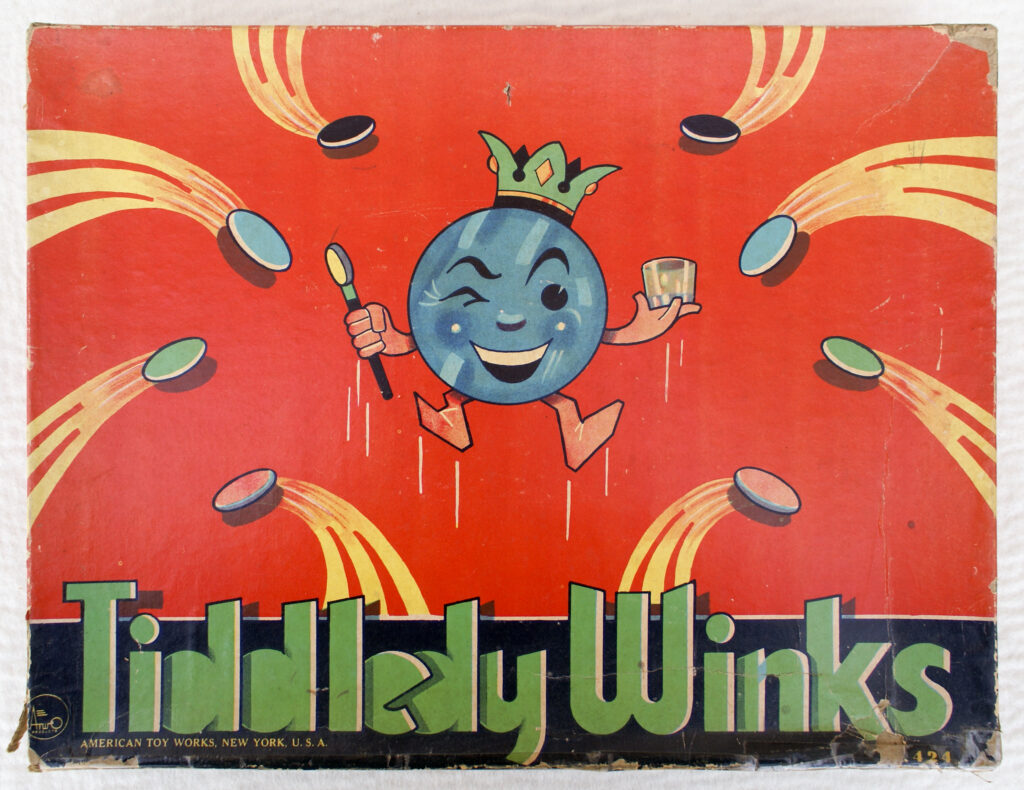
title • Tiddledy Winks
publisher • American Toy Works
publisher catalog number • 424
item • cover
photograph by • Rick Tucker
original in • Tucker Tiddlywinks Collection
licenseable • per Creative Commons CC BY-SA 4.0
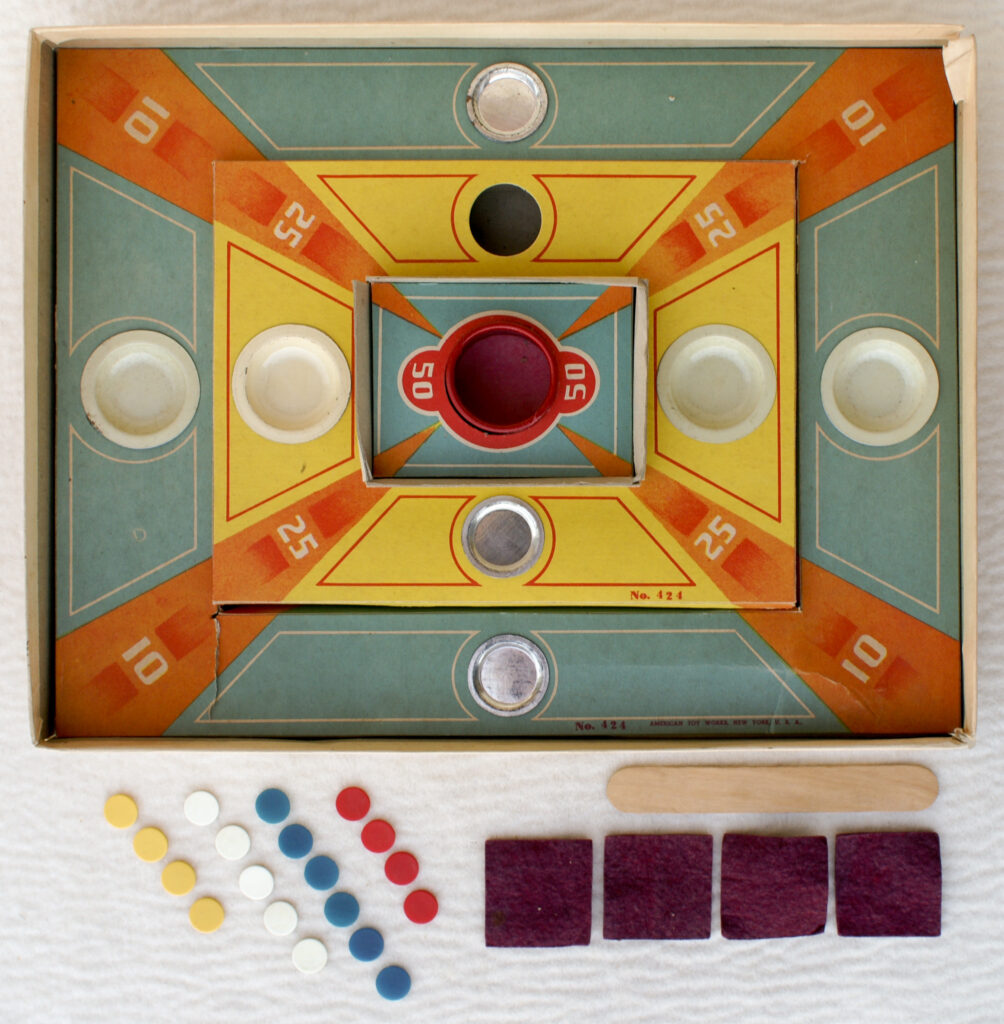
title • Tiddledy Winks
publisher • American Toy Works
publisher catalog number • 424
item • contents
photograph by • Rick Tucker
original in • Tucker Tiddlywinks Collection
licenseable • per Creative Commons CC BY-SA 4.0
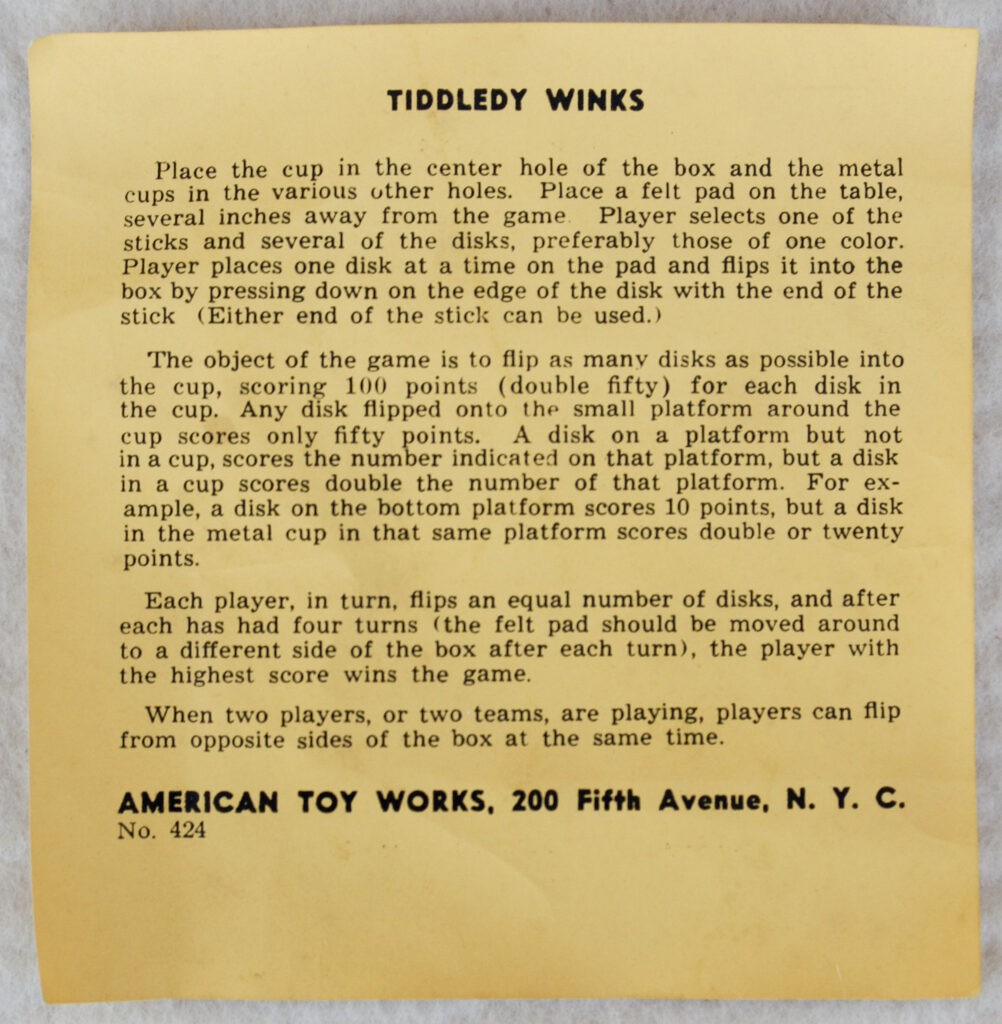
title • Tiddledy Winks
publisher • American Toy Works
publisher catalog number • 424
item • rules
photograph by • Rick Tucker
original in • Tucker Tiddlywinks Collection
licenseable • per Creative Commons CC BY-SA 4.0
The British game, TIDDLEY Road Safety, from an unknown publisher in the 1950s, helped to teach youngsters what road signs mean and how drivers should respond to them. Road signs shown on the game board include “SLOW • MAJOR ROAD AHEAD”, “ROAD JUNCTION”, “CROSS ROADS”, and more. All of these road signs predate when the UK adopted new road signage standards in 1965.
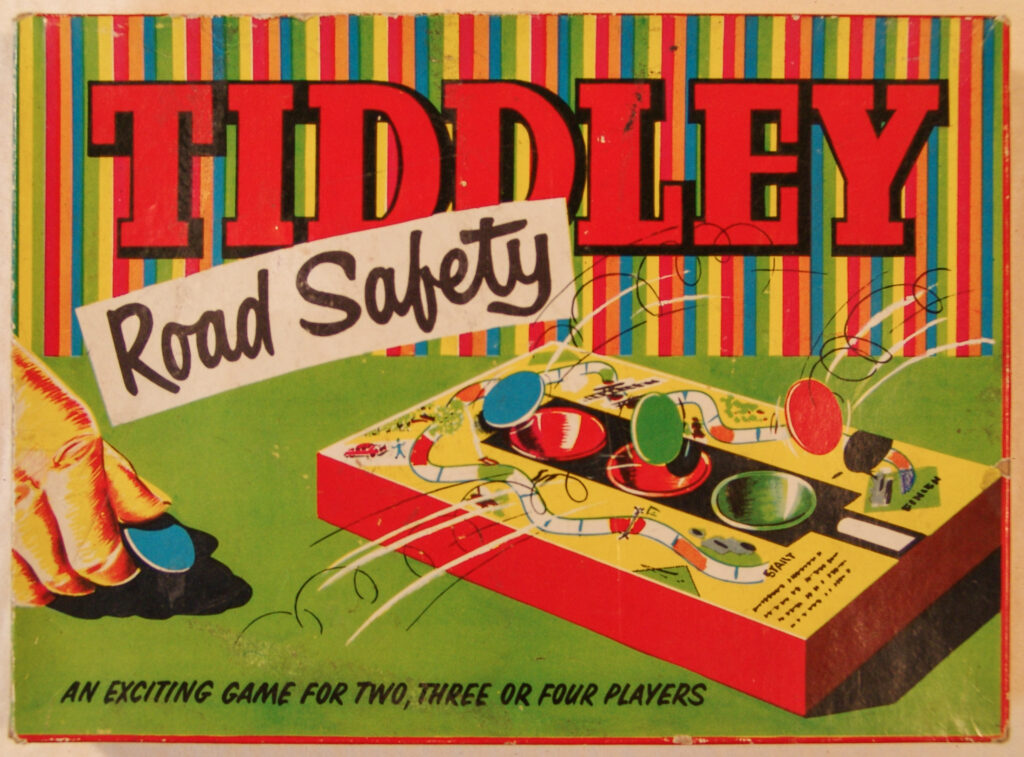
title • TIDDLEY Road Safety
publisher • Unknown (British)
date • 1950s (estimated)
item • cover
photograph by • Rick Tucker
original in • Tucker Tiddlywinks Collection
licenseable • per Creative Commons CC BY-SA 4.0
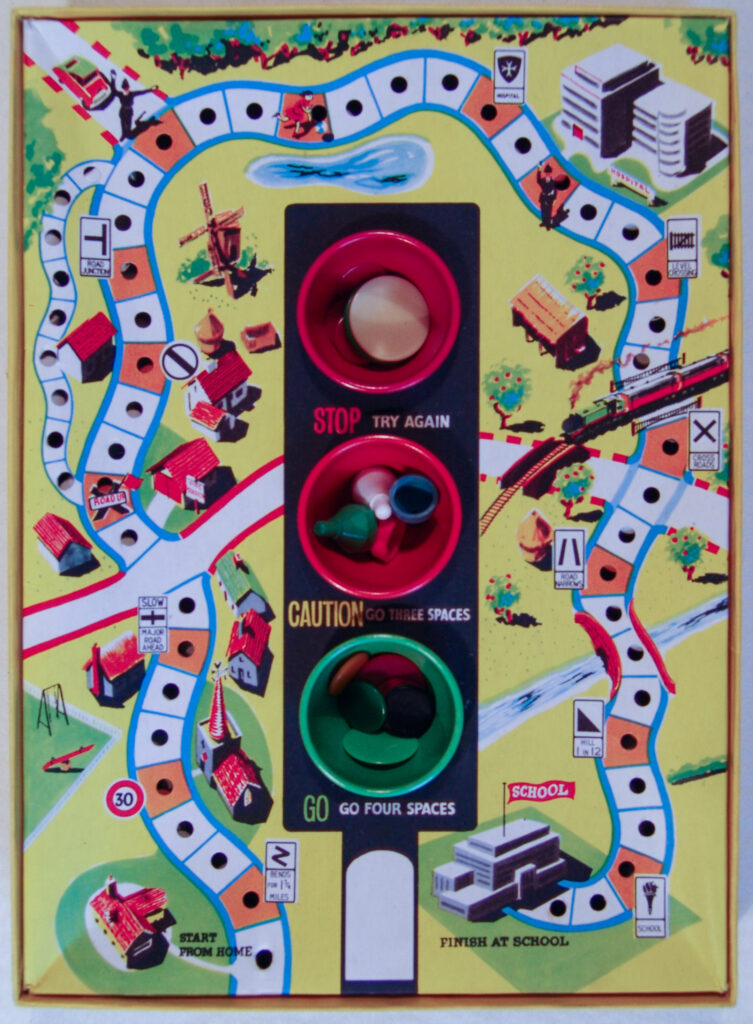
title • TIDDLEY Road Safety
publisher • Unknown (British)
item • contents
photograph by • Rick Tucker
original in • Tucker Tiddlywinks Collection
licenseable • per Creative Commons CC BY-SA 4.0
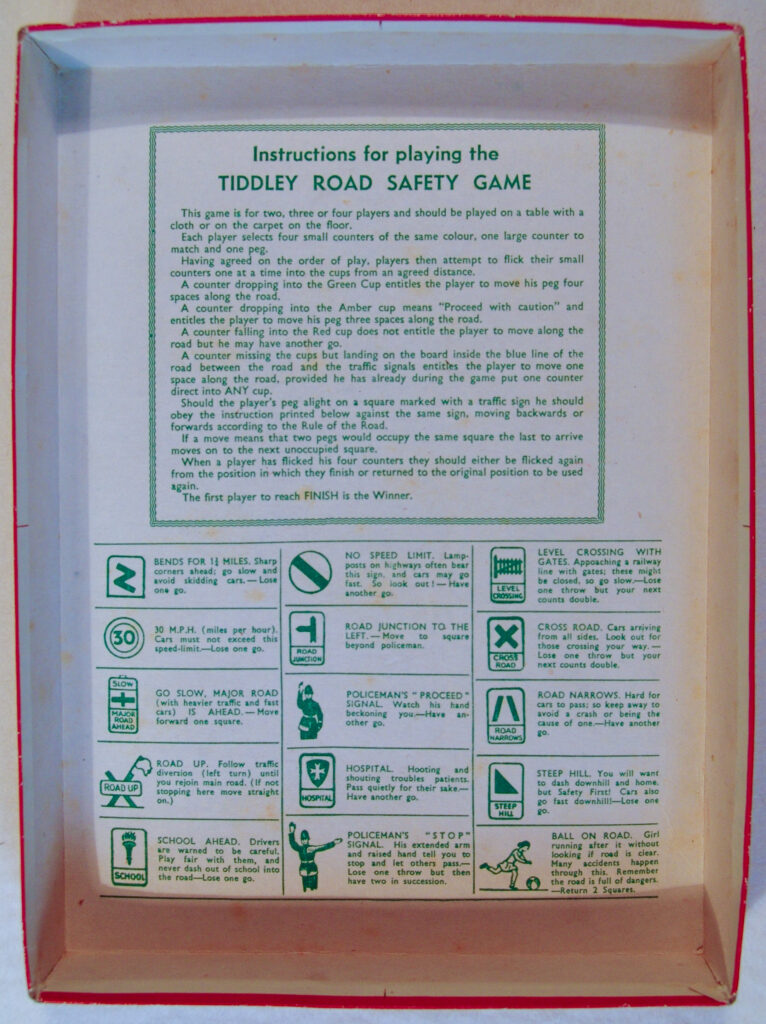
title • TIDDLEY Road Safety
publisher • Unknown (British)
item • rules
photograph by • Rick Tucker
original in • Tucker Tiddlywinks Collection
licenseable • per Creative Commons CC BY-SA 4.0
Rectangular pieces were used in George H. Johnson’s Ballot-Box Game patent (US # 1,539,357, 1925) where the discs have “one State designated on each side thereof, a number thereone corresponding to the number of electoral votes…, the sides of said discs also representing the two principal parties.”
Robert B. Mars (1969, US # 3,429,572) marked discs with “letters of the alphabet, or numbers or words or mathematical symbols.” Then there is Emerson F. Maryn’s Mathematical Tiddly-wink Apparatus (1975, US # 3,881,728) in which winks are made of two parts, pivotally connected, so that “after all players have taken their turns then each player…. Opens each wink to expose the mathematical formula imprinted thereon. Each player must then work the mathematical forumla to arrive at the correct solution. … The winner of the game is the player having the highest mathematical score such that the player with the most winks in the container is not necessarily the winner.